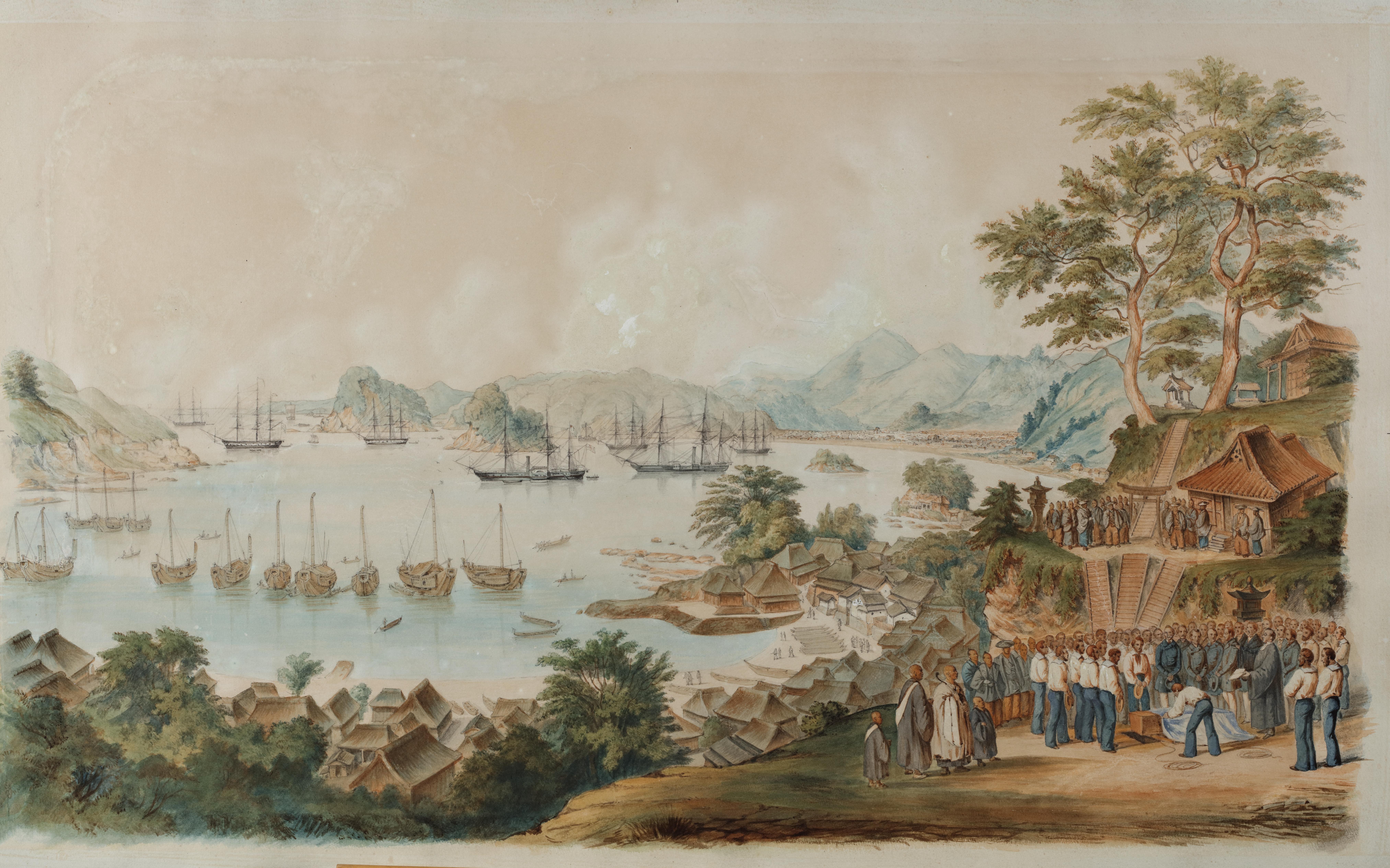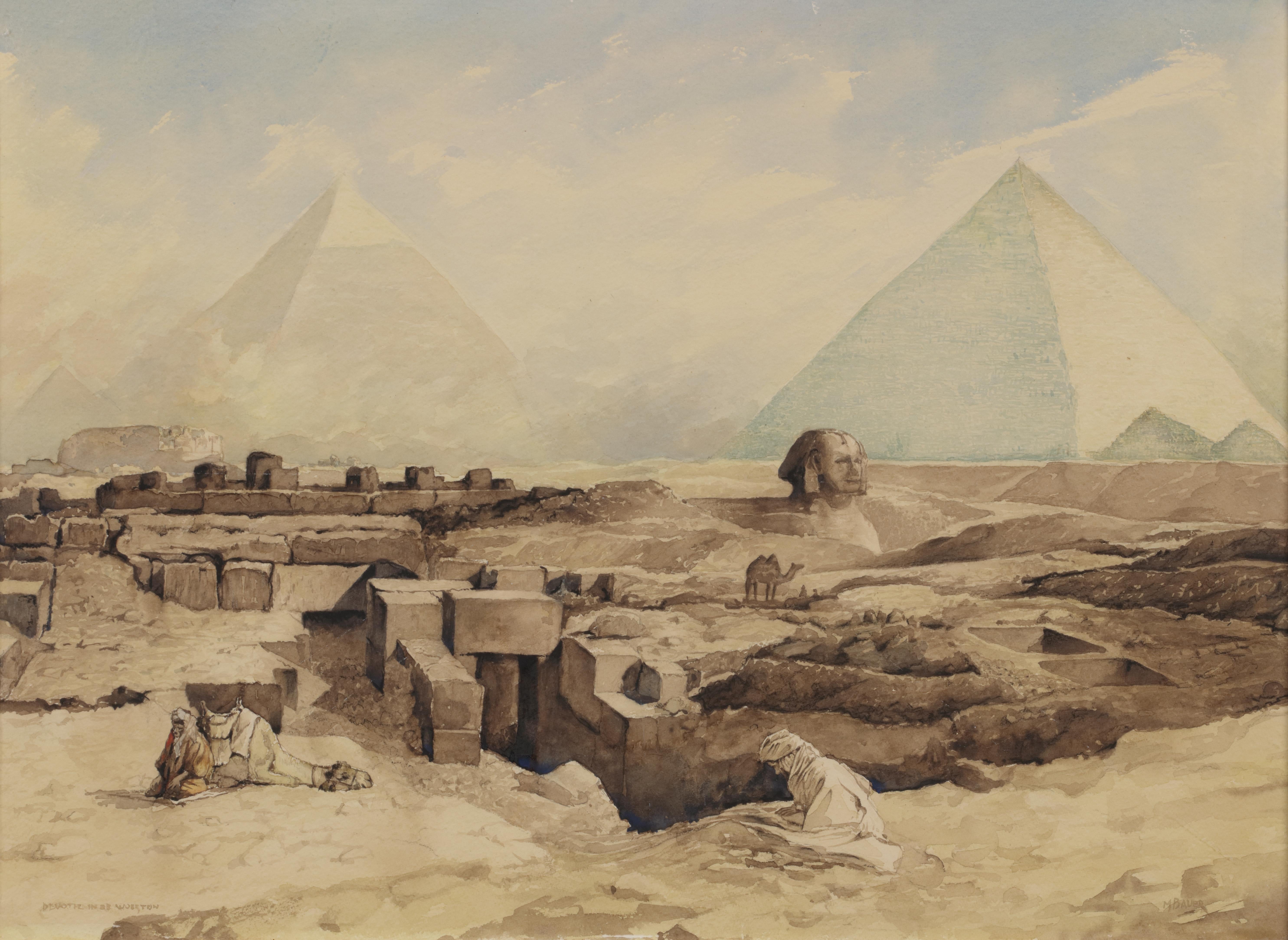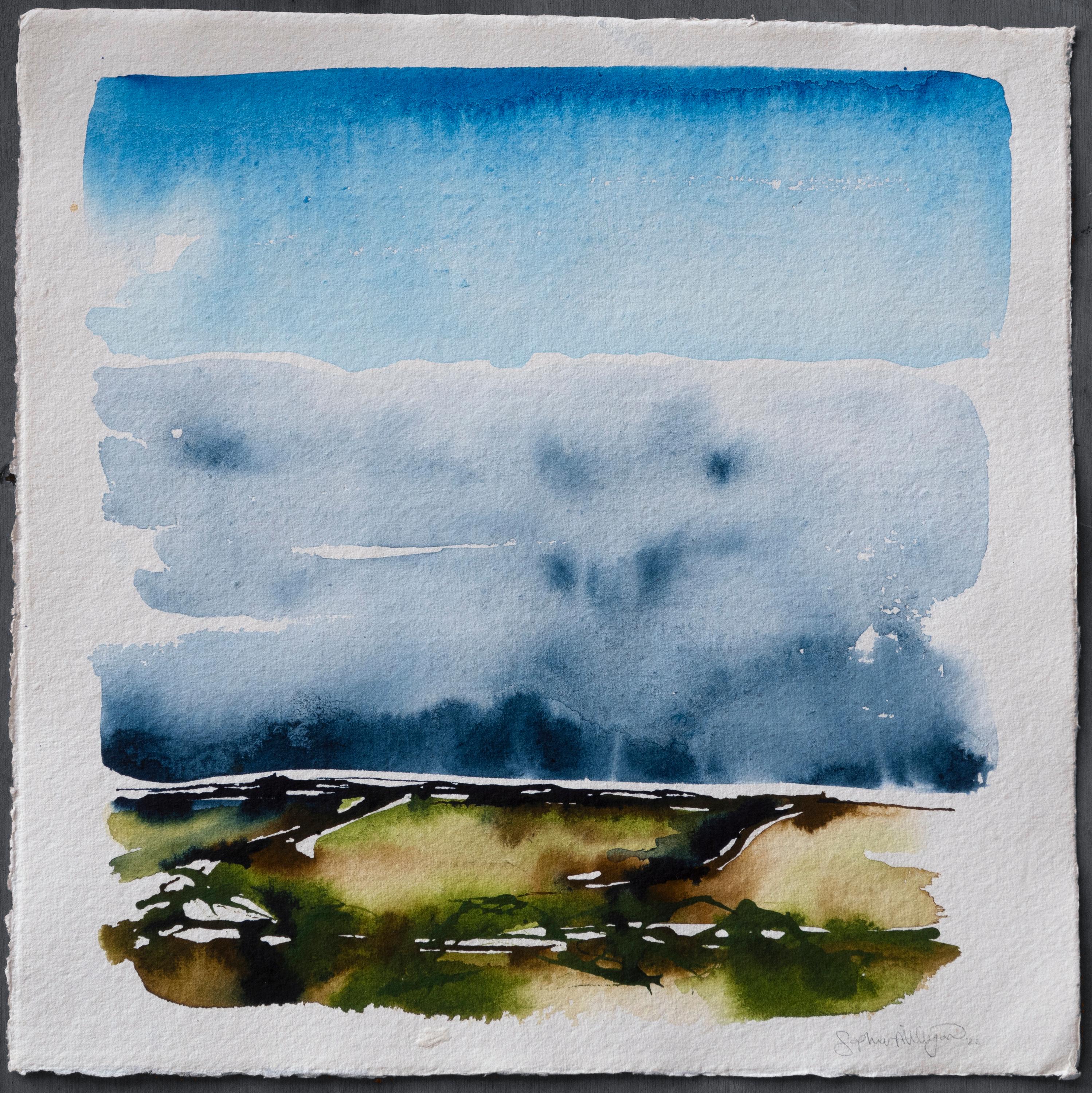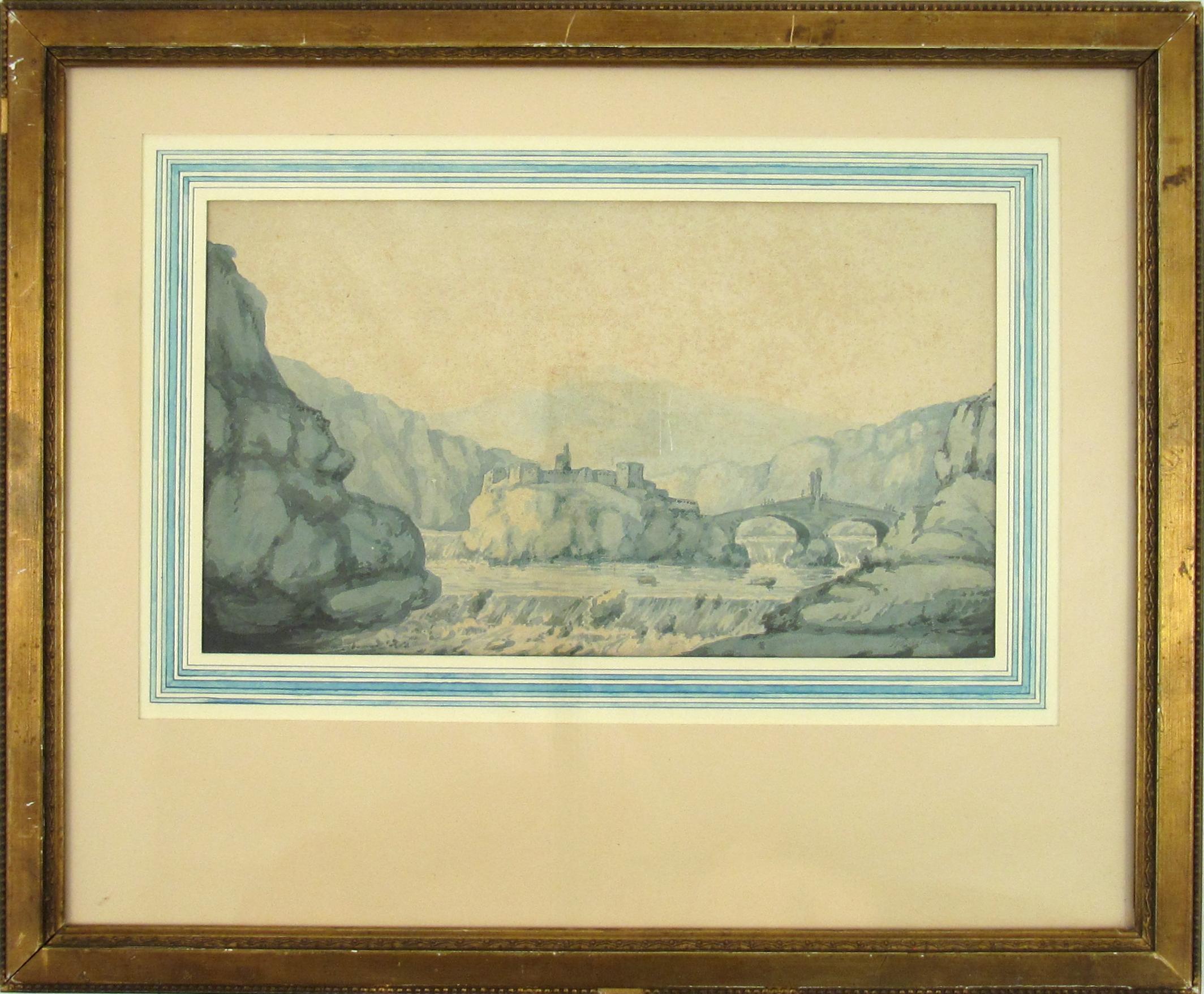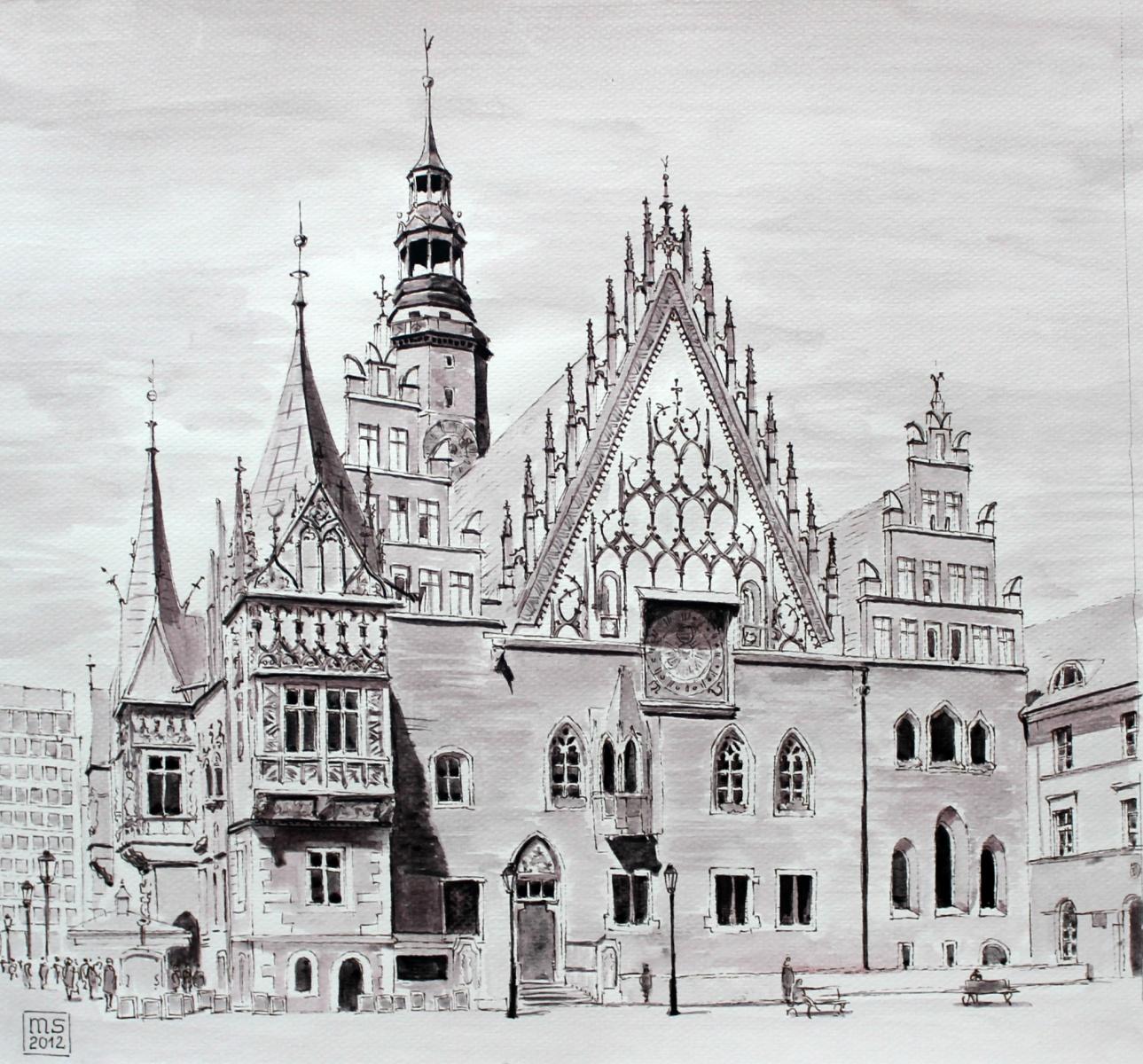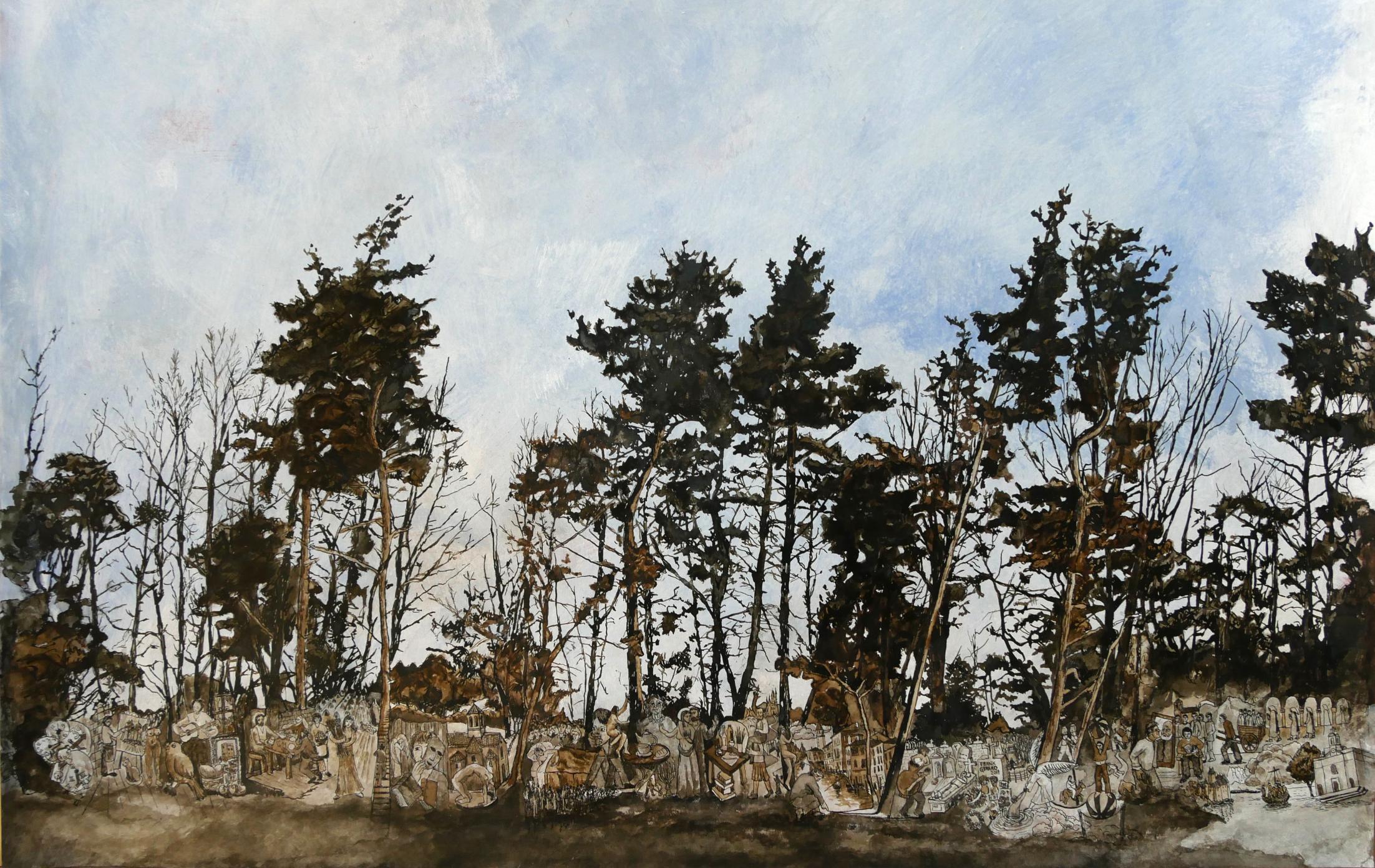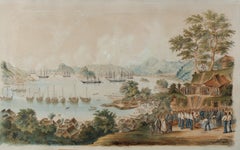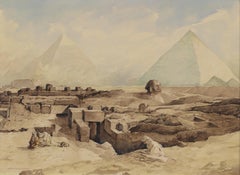
"Sub-Treasury Building, Wall Street, New York" Cityscape Scene, Lower Manhattan
View Similar Items
Want more images or videos?
Request additional images or videos from the seller
1 of 10
James McBey"Sub-Treasury Building, Wall Street, New York" Cityscape Scene, Lower Manhattan1930
1930
About the Item
- Creator:James McBey (1883 - 1959, British)
- Creation Year:1930
- Dimensions:Height: 23.5 in (59.69 cm)Width: 17.25 in (43.82 cm)
- Medium:
- Period:
- Condition:Excellent.
- Gallery Location:New York, NY
- Reference Number:1stDibs: LU184129908502
About the Seller
5.0
Platinum Seller
These expertly vetted sellers are 1stDibs' most experienced sellers and are rated highest by our customers.
Established in 2021
1stDibs seller since 2022
60 sales on 1stDibs
Typical response time: 1 hour
More From This SellerView All
- "Medieval Thoughts, Prague, " Alphonse Mucha, Czech Art Nouveau IllustrationBy Alphonse MuchaLocated in New York, NYAlphonse Mucha (Czech, 1860 - 1939) Medieval Thoughts, circa 1890 Wash, ink, and watercolor on paper 11 x 9 inches Signed lower right Provenance: Phillips New York, 19th and 20th ce...Category
1890s Art Nouveau Figurative Drawings and Watercolors
MaterialsPaper, Ink, Watercolor
- "Street Fair” William Glackens, Ashcan School, Street Scene, Carnival, BoxingBy William GlackensLocated in New York, NYWilliam Glackens Street Fair, circa 1905 Pencil, ink and gouache on paper 10 x 14 inches Provenance: The artist Kraushaar Galleries, New York Estate ...Category
Early 1900s Ashcan School Landscape Drawings and Watercolors
MaterialsGouache, Pencil, Paper, Ink
- "Train Station, " Max Kuehne, Industrial City Scene, American ImpressionismBy Max KuehneLocated in New York, NYMax Kuehne (1880 - 1968) Train Station, circa 1910 Watercolor on paper 8 1/4 x 10 1/4 inches Signed lower right Provenance: Private Collection, Illinois Max Kuehne was born in Halle, Germany on November 7, 1880. During his adolescence the family immigrated to America and settled in Flushing, New York. As a young man, Max was active in rowing events, bicycle racing, swimming and sailing. After experimenting with various occupations, Kuehne decided to study art, which led him to William Merritt Chase's famous school in New York; he was trained by Chase himself, then by Kenneth Hayes Miller. Chase was at the peak of his career, and his portraits were especially in demand. Kuehne would have profited from Chase's invaluable lessons in technique, as well as his inspirational personality. Miller, only four years older than Kuehne, was another of the many artists to benefit from Chase's teachings. Even though Miller still would have been under the spell of Chase upon Kuehne's arrival, he was already experimenting with an aestheticism that went beyond Chase's realism and virtuosity of the brush. Later Miller developed a style dependent upon volumetric figures that recall Italian Renaissance prototypes. Kuehne moved from Miller to Robert Henri in 1909. Rockwell Kent, who also studied under Chase, Miller, and Henri, expressed what he felt were their respective contributions: "As Chase had taught us to use our eyes, and Henri to enlist our hearts, Miller called on us to use our heads." (Rockwell Kent, It's Me O Lord: The Autobiography of Rockwell Kent. New York: Dodd, Mead and Co., 1955, p. 83). Henri prompted Kuehne to search out the unvarnished realities of urban living; a notable portion of Henri's stylistic formula was incorporated into his work. Having received such a thorough foundation in art, Kuehne spent a year in Europe's major art museums to study techniques of the old masters. His son Richard named Ernest Lawson as one of Max Kuehne's European traveling companions. In 1911 Kuehne moved to New York where he maintained a studio and painted everyday scenes around him, using the rather Manet-like, dark palette of Henri. A trip to Gloucester during the following summer engendered a brighter palette. In the words of Gallatin (1924, p. 60), during that summer Kuehne "executed some of his most successful pictures, paintings full of sunlight . . . revealing the fact that he was becoming a colorist of considerable distinction." Kuehne was away in England the year of the Armory Show (1913), where he worked on powerful, painterly seascapes on the rocky shores of Cornwall. Possibly inspired by Henri - who had discovered Madrid in 1900 then took classes there in 1906, 1908 and 1912 - Kuehne visited Spain in 1914; in all, he would spend three years there, maintaining a studio in Granada. He developed his own impressionism and a greater simplicity while in Spain, under the influence of the brilliant Mediterranean light. George Bellows convinced Kuehne to spend the summer of 1919 in Rockport, Maine (near Camden). The influence of Bellows was more than casual; he would have intensified Kuehne's commitment to paint life "in the raw" around him. After another brief trip to Spain in 1920, Kuehne went to the other Rockport (Cape Ann, Massachusetts) where he was accepted as a member of the vigorous art colony, spearheaded by Aldro T. Hibbard. Rockport's picturesque ambiance fulfilled the needs of an artist-sailor: as a writer in the Gloucester Daily Times explained, "Max Kuehne came to Rockport to paint, but he stayed to sail." The 1920s was a boom decade for Cape Ann, as it was for the rest of the nation. Kuehne's studio in Rockport was formerly occupied by Jonas Lie. Kuehne spent the summer of 1923 in Paris, where in July, André Breton started a brawl as the curtain went up on a play by his rival Tristan Tzara; the event signified the demise of the Dada movement. Kuehne could not relate to this avant-garde art but was apparently influenced by more traditional painters — the Fauves, Nabis, and painters such as Bonnard. Gallatin perceived a looser handling and more brilliant color in the pictures Kuehne brought back to the States in the fall. In 1926, Kuehne won the First Honorable Mention at the Carnegie Institute, and he re-exhibited there, for example, in 1937 (Before the Wind). Besides painting, Kuehne did sculpture, decorative screens, and furniture work with carved and gilded molding. In addition, he designed and carved his own frames, and John Taylor Adams encouraged Kuehne to execute etchings. Through his talents in all these media he was able to survive the Depression, and during the 1940s and 1950s these activities almost eclipsed his easel painting. In later years, Kuehne's landscapes and still-lifes show the influence of Cézanne and Bonnard, and his style changed radically. Max Kuehne died in 1968. He exhibited his work at the National Academy of Design, the Art Institute of Chicago, the Carnegie Institute in Pittsburgh, the Memorial Art Gallery of the University of Rochester, and in various New York City galleries. Kuehne's works are in the following public collections: the Detroit Institute of Arts (Marine Headland), the Whitney Museum (Diamond Hill...Category
1910s American Impressionist Landscape Drawings and Watercolors
MaterialsPaper, Watercolor
- "Monhegan Island, Maine, " Edward Dufner, American Impressionism Landscape ViewBy Edward DufnerLocated in New York, NYEdward Dufner (1872 - 1957) Monhegan Island, Maine Watercolor on paper Sight 16 x 20 inches Signed lower right With a long-time career as an art teacher and painter of both 'light' and 'dark', Edward Dufner was one of the first students of the Buffalo Fine Arts Academy to earn an Albright Scholarship to study painting in New York. In Buffalo, he had exchanged odd job work for drawing lessons from architect Charles Sumner. He also earned money as an illustrator of a German-language newspaper, and in 1890 took lessons from George Bridgman at the Buffalo Fine Arts Academy. In 1893, using his scholarship, Dufner moved to Manhattan and enrolled at the Art Students League where he studied with Henry Siddons Mowbray, figure painter and muralist. He also did illustration work for Life, Harper's and Scribner's magazines. Five years later, in 1898, Dufner went to Paris where he studied at the Academy Julian with Jean-Paul Laurens and privately with James McNeill Whistler. Verification of this relationship, which has been debated by art scholars, comes from researcher Nancy Turk who located at the Smithsonian Institution two 1927 interviews given by Dufner. Turk wrote that Dufner "talks in detail about Whistler, about how he prepared his canvasas and about numerous pieces he painted. . . A great read, the interview puts to bed" the ongoing confusion about whether or not he studied with Whistler. During his time in France, Dufner summered in the south at Le Pouleu with artists Richard Emil Miller...Category
Early 20th Century American Impressionist Landscape Drawings and Waterco...
MaterialsPaper, Watercolor
$4,800 Sale Price20% Off - Out of the Sun (Under the Racetrack Grandstand), Saratoga Springs, Anne DiggoryBy Anne DiggoryLocated in New York, NYAnne Diggory (b. 1951) Out of the Sun (Under the Racetrack Grandstand), 1978 Watercolor on paper 7 x 10 inches Signed and dated lower left Provenance: Ac...Category
1970s Contemporary Landscape Drawings and Watercolors
MaterialsPaper, Watercolor, Pencil
- "Bass Rocks, Gloucester, Massachusetts" Watercolor Bright SeascapeBy Louis WolchonokLocated in New York, NYLouis Wolchonok (1898 - 1973) Bass Rocks, Gloucester, Massachusetts, 1923 Watercolor on wove watercolor stock paper 13 x 17 3/4 inches Signed and dated lower right corner: LWolchonok...Category
1920s American Modern Landscape Drawings and Watercolors
MaterialsPaper, Watercolor
You May Also Like
- A Windmill above an Arched Bridge, at left a Quay WallBy Jan Josefsz Van GoyenLocated in New York, NYInscribed “159” in the upper right Provenance: (Possibly) The Van Goyen sketchbook which in 1845 belonged to Andrew Geddes, A.R.A. (1783-1844), London; his sale, Christie's, London,...Category
1650s Old Masters Landscape Drawings and Watercolors
MaterialsPaper, Chalk, India Ink, Watercolor
- 1854 Funeral of R. Williams at Gyokusen-ji Temple, Shimoda, with Commodore PerryLocated in Amsterdam, NLWilhelm Heine (Dresden 30 January 1827-Löbnitz 5 October 1885) ‘Funeral of Robert Williams in the cemetery of the Temple Gyokusen-ji at Shimoda in April 1854’ With a sticker on the reverse of the frame by Coupil & Co. 1855 Watercolour on paper, H. 57 x W. 92 cm Depicted is the Bay of Shimoda with seven American ships including the two paddle-wheel warships USS Mississippi and Susquehanna. On the Gyokus- en-ji temple grounds on the right is the coffin in the middle with the remains of US marine Robert Williams, ready to be lowered into the grave. Looking on from the left are the Buddhist monks and Japanese officials who joined the first Christian funeral on Japanese soil. Around the grave are US marines, Commodore Perry...Category
Mid-19th Century Figurative Drawings and Watercolors
MaterialsPaper, Ink, Watercolor, Gouache
Price Upon RequestFree Shipping - Devotion in the Dessert near the pyramids of Gizeh, circa 1919By Marius BauerLocated in Amsterdam, NLMarius Bauer (1867-1932) ‘Devotie in de Woestijn’ (Devotion in the Dessert near the pyramids of Gizeh, circa 1919) Signed lower right and titled lower left Watercolour on paper, H...Category
Early 20th Century Impressionist Landscape Drawings and Watercolors
MaterialsPaper, Ink, Watercolor, Pencil
- 'Fall Fog Approaching'. Contemporary Landscape Clouds Moody sky Blue Green BrownBy Sophia MilliganLocated in Penzance, GB'Fall Fog, Approaching'. Contemporary landscape painting, Cornwall Original Artwork, Unframed _________________ Heavy skies moving in over the autumnal landscape of West Cornwall: a ...Category
2010s Contemporary Landscape Drawings and Watercolors
MaterialsInk, Watercolor, Archival Paper
- 'Ebren Ha Dor, Shifting Sky'. Contemporary Landscape, Rural, Countryside, CloudsBy Sophia MilliganLocated in Penzance, GB'Ebren Ha Dor, Shifting Sky'. Contemporary landscape painting, Cornwall Original Artwork, Unframed _________________ The dancing light and rapidly changing skies, hung high above the...Category
2010s Contemporary Landscape Drawings and Watercolors
MaterialsInk, Watercolor, Handmade Paper
- Gustav Melcher ( German, 1898 -?) Boats off Venice Italy Ink Water Color c. 1918By Gustav MelcherLocated in Meinisberg, CHGustav Melcher (German, 1898-?) Segelschiffe vor Venedig - Sailing ships off Venice • India ink, water colour wash • Visible image ca. 11.5 x 18 cm • Glased Frame ca. 20 x 25 cm • Verso various inscriptions • Signed lower right Gustav Melcher was a German painter and a pioneer in film, film criticism and film theory and created this clever little picture of the skyline of Venice with various vessels. Going by the various inscriptions an the backing paper, this drawing was made in 1918 when Gustav was twenty years old and passed on three years later to Gertrud Melcher on the 1. 2. 1921. I have no reasons to doubt this information. The small drawing is still in its unopened frame, so maybe there is more information to be discovered , however this will be the privilege of the next owner. The picture also has retained its original antique frame – note that it has lost over the years various sections of the gesso decoration. The very precisely executed drawing is most enjoyable to look at and doing so, remember you are looking through the eyes of a young man, who saw this foreign sea cape over a century ago. Thank you for your interest and please note, that I offer free worldwide shipping on all my items. Gustav Melcher began his studies at the Düsseldorfer Kunstakademie under Peter Janssen and Eduard von Gebhardt. Originaly he was interested in figurative and portrait painting, but after time he decided to pursue the depiction of land- and marinescapes. Durin his studies the young artist undertook trips to visit England, Scotland, Belgium and France and he joined the artist society Malkasten. It was in those days he would hold speeches to his colleges about this new invention called ‘Kintopp’ – Melcher was a great advocate of the moving pictures...Category
1910s Naturalistic Landscape Drawings and Watercolors
MaterialsIndia Ink, Paper, Watercolor
Recently Viewed
View AllMore Ways To Browse
New York Street Sign
New York Manhattan
Water Scenes
New York City Building Art
New York Street Scene
New York Etching
New York Street Scene Painting
New York City Street Scenes
Wall Street New York
Manhattan New York City
Manhattan Framed
Streeter Co
Streeter And Co
London Street Scenes
New York Cityscape
Etching New York City
Vintage Building Drawing
Vintage Building Drawings

